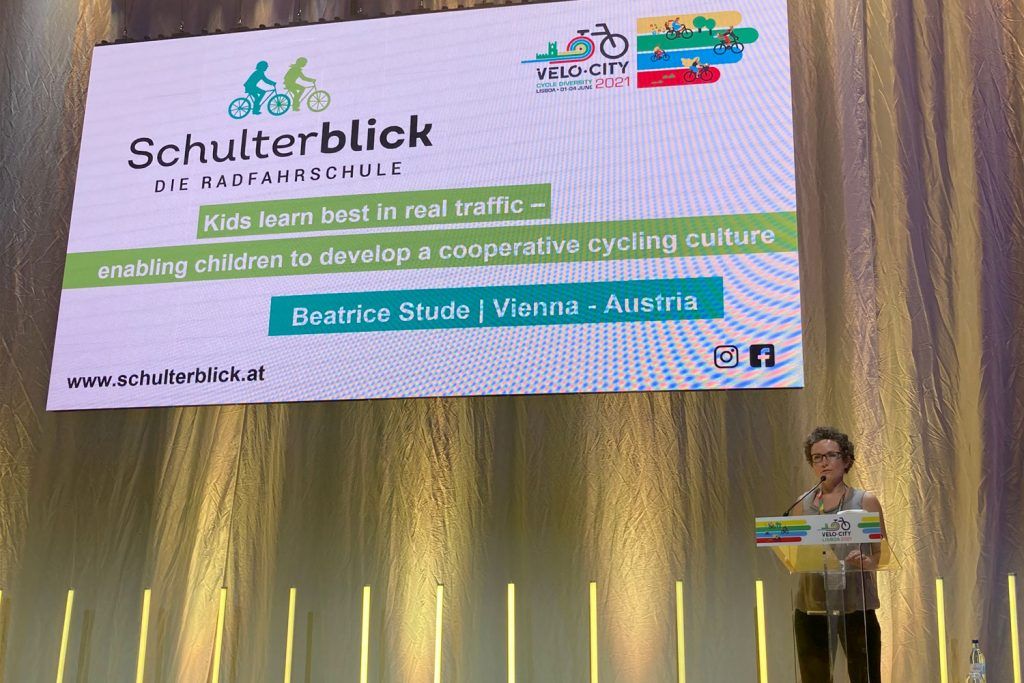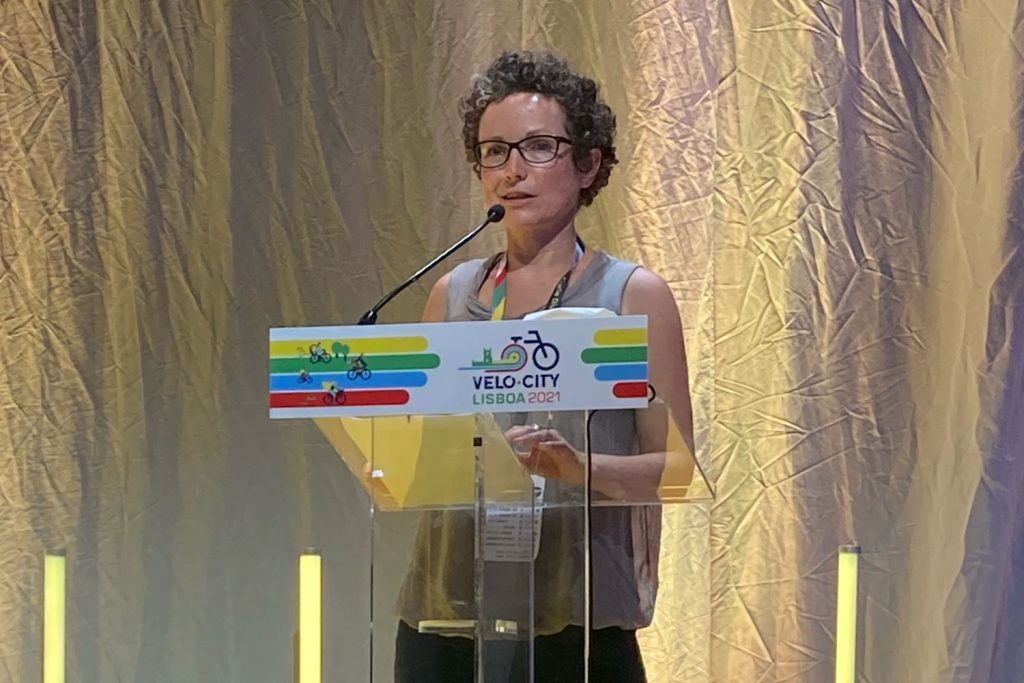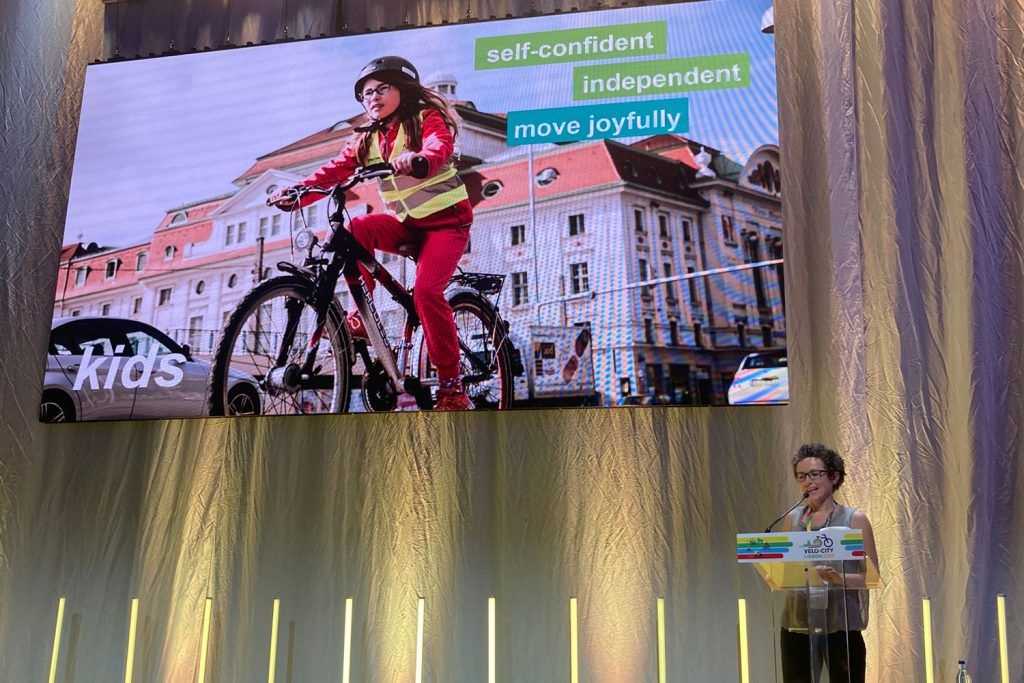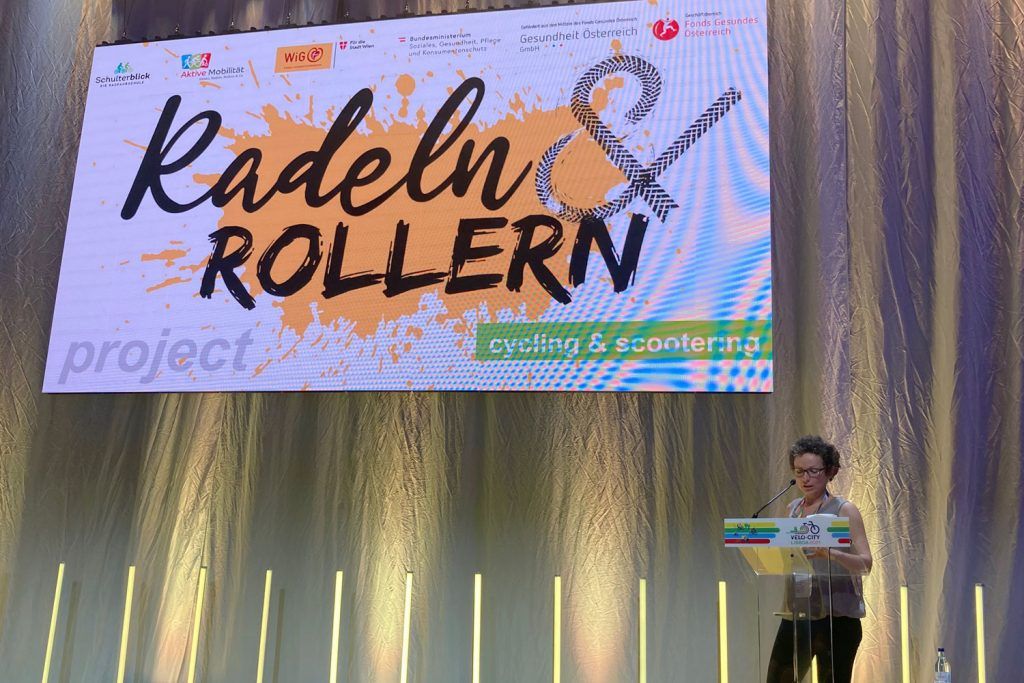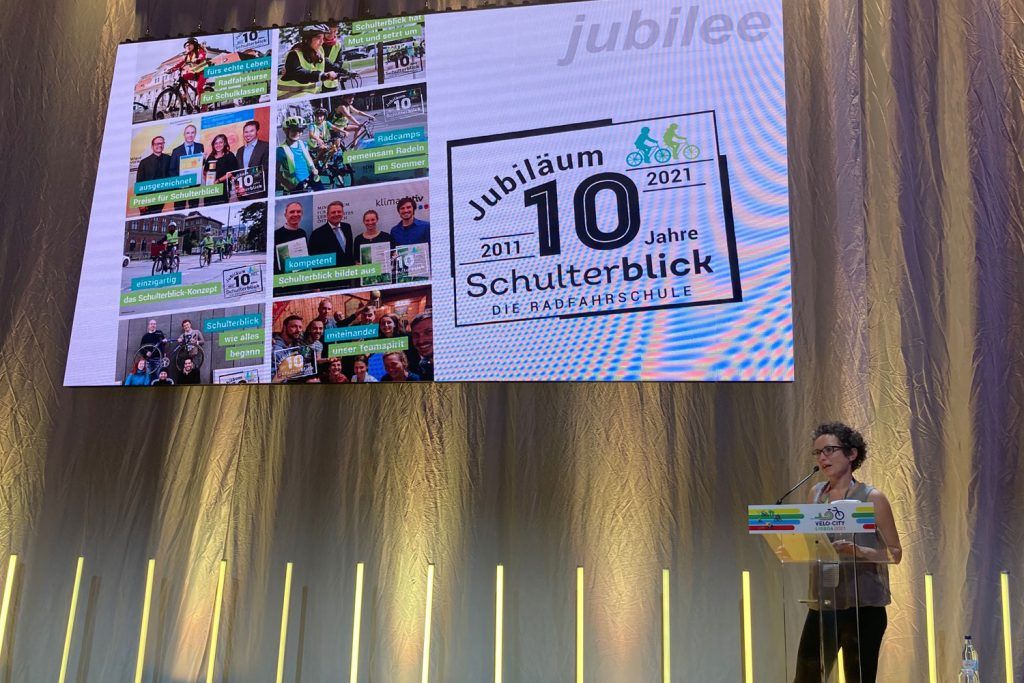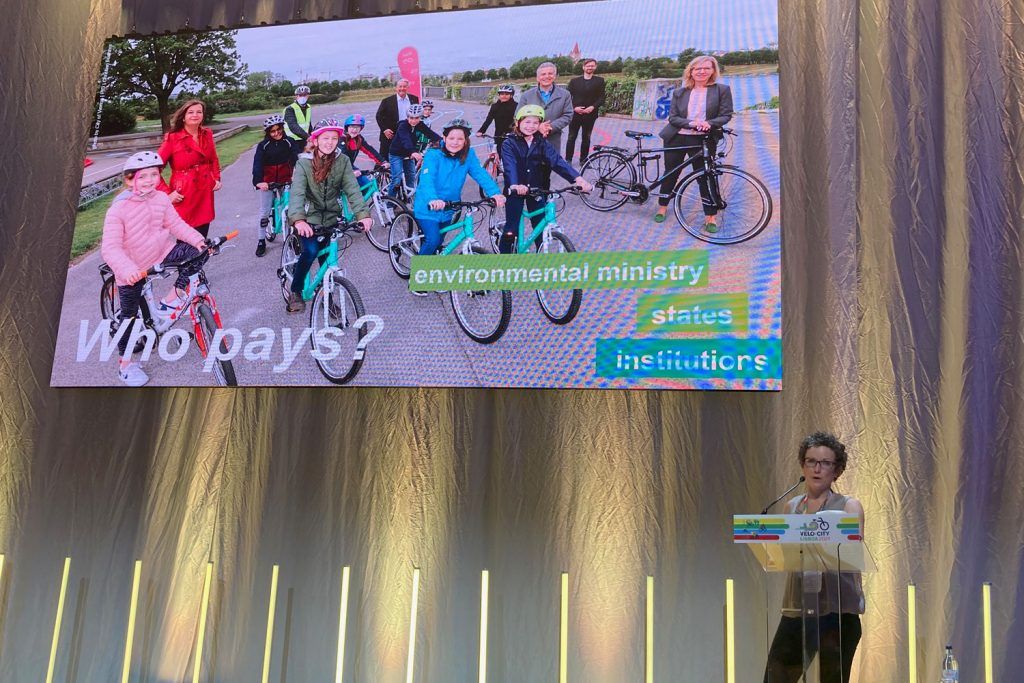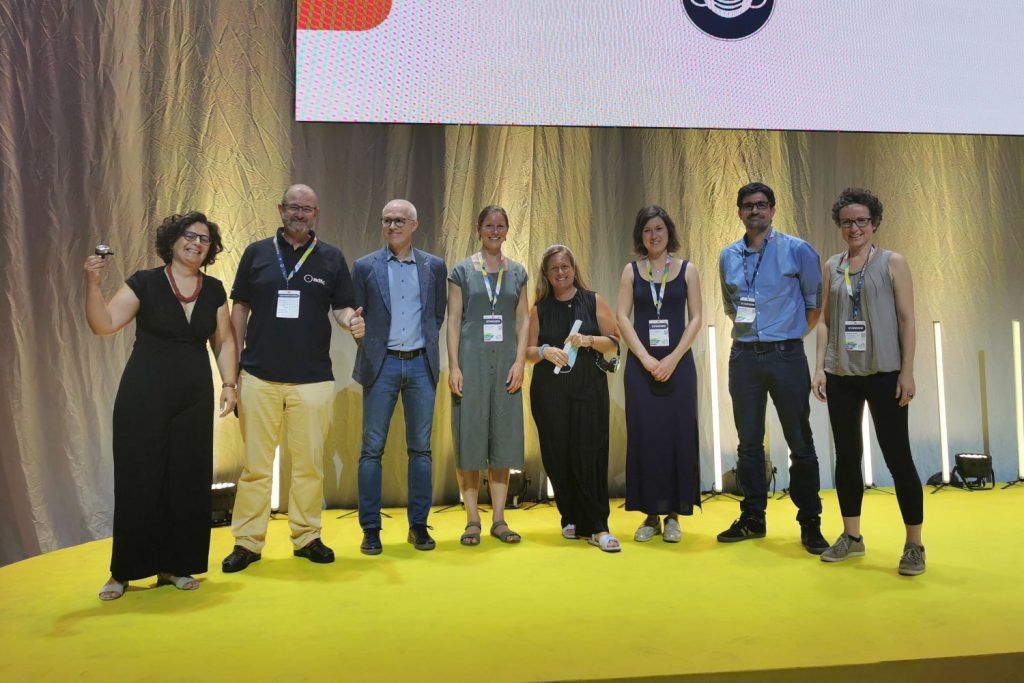At this year’s Velo-City, the world’s largest conference on cycling, I presented the cycling courses and the Schulterblick-Concept in the »Cycling to School« session – together with six other inspiring projects from Slovakia, Portugal, Poland, Germany and Belgium.
The feedback was very fine. An idea arose immediately after the session and is or was brought to the ECF: To set up a platform for »cycling to school« and thus to establish a European exchange on this topic. Since the six projects presented alone offered a variety of ways in which cycling in the context of school with children and young people can be approached, established and further developed. Here is a brief outline of the projects – in alphabetical order of the presenters:
Physics of Cycling is fun – Armin Falkenhain, Germany
Cycling is movement and movement is physics. How can we use young people’s sporting pleasure in cycling to generate even more enthusiasm and interest in physics, math or biology at school? The international educational project »STEM on the move« pursues a new pedagogical approach to bring more movement into the classroom and into the everyday life of schools. STEM means science, technology, engineering and mathematics.
Cycling to school through the eyes of children – Bart Nobels, Belgium
How do you break the vicious circle of “more and more parents are taking their children to school by car, because the school environment is increasingly dangerous because more and more parents are taking their children to school by car… ?“ To get more children to school by bike, adults mostly are looking at ways to improve the infrastructure. The province of Flemish Brabant encourages schools to see it through the children’s eyes.
Schulterblick: Kids learn best in real traffic – Beatrice Stude, Austria
To be on the road is a huge part of life. We encourage and empower children, instead of scaring and falsly protecting them. We train them to more independence: We inspire the beauty of being able to actively participate in life, to discover their wider surroundings. We lay the groundwork for children at the age of ten to be able to ride to school alone.
Statusrad: The bicycle as a status symbol for the youth? – Carolin Kruse, Germany
The project StatusRad targeting 9th and 10th graders, aims to integrate cycling voluntarily into the student’s daily routines. By promoting bicycles as a good, hip, cool and inexpensive mode of mobility the project tries to influence their preferred choice of transport even after obtaining their driving license and to strengthen their environmental consciousness.
The cycling May campaign – Grzegorz Krajewski, Poland
Seven years ago the idea of cycling to schools was hardly present in Gdansk, but a year ago however, on average 57 percent of all travels to schools in May were trips on bicycle or scooter! This bicycle revolution was caused by the Cycling May annual campaign, which was designed and implemented in Gdansk and later transferred to 46 other cities of Poland.
Let’s not make our children autoholics – Kristina Griacova, Slovakia
As Cyklokoalicia, the biggest Slovak cycling advocacy NGO, took over the organisation of Bike to school campaign in 2020, the focus was shifted from just a plain competition of schools. The campaign offers now instructions for education and solutions for infrastructure helping create better long-term conditions for school mobility. In the better future we see independent, active, fear-less children on bikes.
School mobility based on sustainable options: The Lisbon experience – Sofia Knapic, Portugal
Lisboa sem Rodinhas! is a programme aimed at making every child in the city learn to cycle before they reach age 10. Lisboa sem Rodinhas was integrated into the existing Physical Education curriculum, taking place at the school’s facilities and during school time, consisting of six 45-minute classes over three consecutive weeks. The programme also aims to raise awareness about sustainable mobility and active modes: cycling on a day-to-day basis.
Further exchange in Munich
Another concrete exchange that arose from Lisbon is the exchange with the city administration of Munich. A representative of the city of Munich connected us with his colleague who is responsible for the cycling courses in Munich. We quickly had the idea to exchange ideas about cycling courses in the two cities: Munich with over 1.5 million inhabitants and an area of 310 square kilometers and Vienna with 1.9 million people on an area of around 415 square kilometers.
I will report on it here.
